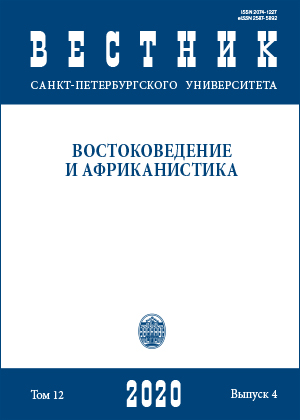Tourism Industry of Sudan: History and Peculiarities of its Development in the 20th and 21st Centuries
DOI:
https://doi.org/10.21638/spbu13.2020.408Abstract
The article considers the history of the tourism industry of one of the oldest states in the world — Sudan. The first attempts to organize sightseeing trips for Europeans to the Nile Valley were recorded after Napoleon’s expedition to Egypt in the early 19th century, but at that time Sudan was a little-known region. The military campaign of 1821 undertaken by the troops of Muhammad Ali resulted in the submission of Sudan and the establishment of the Egyptian-Turkish administration there. Since that time, the level of European intrusion into the country began to increase. The activities of travel companies only became notable in Sudan after the beginning of the colonial rule by England and Egypt in 1899. In the first decades of the twentieth century the first hotels were created, roads, including the railroad, were built, and cities were expanded as well as modernized. The hotel owners were predominantly foreigners. Tourism developed further after the country achieved independence in 1956. Since that time, national travel companies appeared, and travelers from Western countries and the Arab began to visit the country. Tourism has become an attractive sector for investment and capital raising, both local and international. At the same time, the economic and political problems observed in the period of 1980–2000 did not allow tourism to become a source of significant income for the state and prevented the sector from expanding. Currently, both high-level hotels and modest guesthouses, that mainly provide services for the domestic consumer, are built and operate in the capital of the country and in some cities of regional significance. The activity of travel companies remains at a low level and the number of foreign travelers is small. Local companies have attempted to cooperate with their Russian counterparts, but there are not enough prerequisites for initiating collaboration in this area. Sudanese researchers, economists, sociologists, historians, and marketing experts analyze the tourism sector and try to make recommendations for improving work in this area. This is reflected in a number of works in scientific journals that have been published in recent years.
Keywords:
history, tourism, Sudan, Middle East, Khartoum
Downloads
References
Downloads
Published
How to Cite
Issue
Section
License
Articles of "Vestnik of Saint Petersburg University. Asian and African Studies" are open access distributed under the terms of the License Agreement with Saint Petersburg State University, which permits to the authors unrestricted distribution and self-archiving free of charge.





